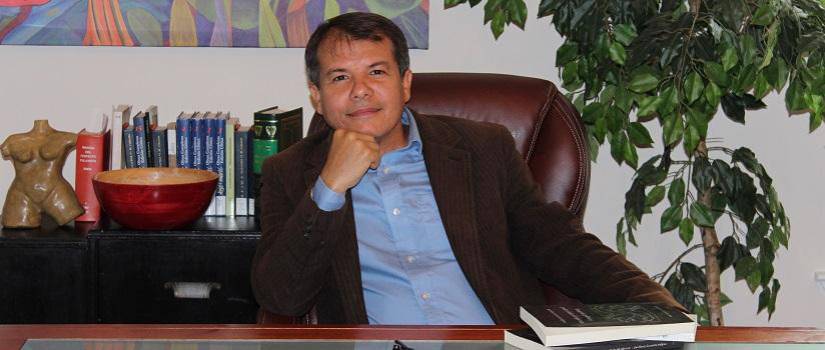The scene is a far cry from what the professor of comparative literature could experience in his native Cuba, where he completed the first few years of his higher education using works dictated for his use by the Communist government.
“I used to feel that I was in heaven,” he says – “just going into the stacks.”
Camacho came to the United States, and while teaching in Arkansas, he encountered a textbook by two USC instructors (Lizette Laughlin and Patti Marinelli). He was impressed by its quality and thought that if two USC instructors had written such a book, the university itself must be remarkable.
“I loved the book,” he says. “That was really my only reference for the Spanish program at USC.”
And so, in 2003 he came to USC, where he now directs USC’s Spanish program and teaches comparative literature – mostly Caribbean and, often, in Spanish. He also directs graduate research.
“This generation have grown up in a very different environment” than did Camacho or even previous generations of Americans, he says. “There’s been a tremendous expansion (of information), an opening of private life on Facebook.
“They need to know what is happening in the world. They need to be able to think critically and creatively.”
Camacho says he avoids talking to students about his personal life, especially Cuba.
“I try to give them space and freedom where they can share their views,” and talking about his own struggles could stymie that.
And so his students not only read a variety of literature, they work among the people who speak it – Latinos aided by 17 nongovernment organizations in the Midlands, often immigrants learning to make their way into American culture. The students see Spanish not as an abstract idea but as something that people use to express themselves every day – and a tool they can use to ease the way for others.
The students fill out paperwork. They translate. They become aware of cultural differences and similarities.
“We make sure that our students not only know the language” but become active in the community, Camacho says. Spanish isn’t just something to learn – it should bring cultural awareness, too.
Why did you come to USC?
“When I came (in 2003), USC was changing its profile to more research,” Camacho says. “I’m a researcher at core.”
“USC has given me a creative environment where I have been able to grow.”
Camacho also teaches students at a variety of levels.
“I like working with the students,” he says – “especially in the upper courses, where students are doing their own readings and confronting their ideas.
“They motivate (me) to do more research.”
In 2014, Camacho edited “Cuentos de la Habana Elegante” (“Tales of Elegant Havana”), which contains Cuban Modernist stories published in a 19th-century magazine for “the fairer sex” and then never again. Most of the authors were journalists commenting through their works on the time before the Cuban revolution.
Rewarding the best students
Camacho has worked to recognize the best student research in the Spanish program – for research in comparative literature and language, and in literature and culture, as well as in student teaching.
“These are new awards,” he says, designed to promote top-quality work. “We can encourage students to do their best if they know that their work will be recognized.”
